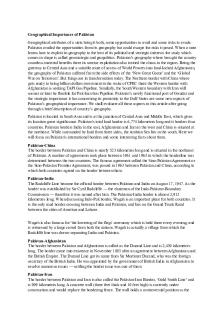History Of Pakistan 1947-2017 PDF

| Title | History Of Pakistan 1947-2017 |
|---|---|
| Author | Shaharyar Zafar |
| Course | E-Commerce@Ches |
| Institution | University of Alabama |
| Pages | 15 |
| File Size | 447.4 KB |
| File Type | |
| Total Downloads | 27 |
| Total Views | 134 |
Summary
Download History Of Pakistan 1947-2017 PDF
Description
History ILHAN NIAZ INTRODUCTION AND THEMATIC OVERVIEW Since its independence from the United Kingdom and partition from India in August 1947, Pakistan’s historical trajectory has been marked by five major themes. First, political and institutional instability have led to periodic oscillation between civilian and military rule and thus prevented Pakistan from achieving a stable and legitimate political order. Second, amid the alternation of civilian governments, military regimes, and different political systems, Pakistan’s administrative institutions and the manner in which power is exercised by the state have become more arbitrary, dysfunctional and ultimately ineffective, leading to a condition of civilian deinstitutionalization and a persistent crisis of governance. Third, Pakistan has been an underachiever in terms of socioeconomic performance among post-colonial states, unable to develop as a developed industrialized state, or manage proper investment in human resource development, periods of high gross domestic product (GDP) growth notwithstanding. Fourth, perceiving itself to be at mortal risk from India, Pakistan has sought to amass military strength and the capacity to project asymmetrical warfare, wedding itself to a national security and foreign policy outlook that is dominated by consideration of India and the perceived threats it poses, and which prioritizes hard power. Fifth, Pakistan’s state and society have steadily moved away from the epistemological basis for modern national identity and social order, and instead embraced Islamic theocentricism, thereby narrowing the scope for what, by Western standards at least, constitute rational political discourse, scientific progress and the protection of human rights, while empowering majoritarian and sectarian communalism, which has led in many cases to conflict. Taken together, the five themes underpinning Pakistan’s history have combined to make the country what it is today. Despite being the Muslim world’s only nuclear power, and the world’s 24th largest economy (measured in purchasing power parity), Pakistan has one of the lowest rates of enrolment of school-age children in the world, and only two Pakistani universities have ever made it to any of the major global rankings of the top 500 learning institutions. Pakistan has a large proportion of youth relative to its population (estimated to total 199.1 million in mid-2017), but its sluggish productivity and lacklustre recent economic performance threaten to turn a demographic dividend into disaster. Pakistan’s politics have remained doggedly pluralistic, in spite of periodic military takeovers and religious extremism, but even during periods of democracy the armed forces have enjoyed hyper-autonomy and exercised a veto over all key areas of national policy. The freedom to criticize politicians is widely exercised in Pakistan, but free speech apparently evaporates on matters pertaining to the armed forces and religion, and is often restricted on issues such as labour rights, women’s rights and sexual identity. The Pakistani structure of selective pluralism operates alongside a large non-governmental organization sector, an expanding media, growing internet and telecommunications connectivity, and a significant if qualitatively uncompetitive higher education sector. In historical terms, Pakistan’s evolution as a polity has been fundamentally affected by the pre-colonial and colonial past, as well as the responses of state ´elites to the challenges of statebuilding generated by the freedom movement and the Partition of the British Empire in India. Understanding how the traumatic events of Pakistan’s first decade influenced the fateful choices made by the last generation of British Indian, and the first generation of Pakistani, leaders is the subject of the next two sections. www.europaworld.com
THE INITIAL CHALLENGES OF STATE-BUILDING IN PAKISTAN, 1947–53 Table 1: Governors-General of Pakistan Mohammad Ali Jinnah . . . . . . 1 . 5 Aug. 1947–11 Sept. 1948 Khawaja Nazimuddin . . . . . . .11 Sept. 1948–17 Oct. 1951 Malik Ghulam Muhammad . . . . . . 17 Oct. 1951–7 Aug. 1955 7 Aug. 1955–23 March 1956 (24 March 1956–27 Oct. Iskander Mirza . . . . . . . . . 1958 as President)
Table 2: Prime Ministers of Pakistan, 1947–58 Liaquat Ali Khan . . . . . . . . . 15 Aug. 1947–16 Oct. 1951 Khawaja Nazimuddin . . . . . . .17 Oct. 1951–17 April 1953 Muhammad Ali Bogra . . . . . . 1 . 7 April 1953–12 Aug. 1955 Chaudhry Muhammad Ali . . . . . 1 . 2 Aug. 1955–12 Sept. 1956 Hussain Shaheed Suhrawardy . . . . .12 Sept. 1956–17 Oct. 1957 Ibrahim Ismail Chundrigar . . . . . . 17 Oct.–16 Dec. 1957 Feroz Khan Noon . . . . . . . . . 16 Dec. 1957–7 Oct. 1958
South Asia has traditionally alternated between imperial order and warring states. For much of the region’s history, warring states have proliferated, while, for relatively brief interludes, imperial regimes have been able to exercise supreme hegemony, if not always direct territorial control. The territories that came to comprise Pakistan were the historic, geographic and demographic, peripheries of South Asia, and had gradually been brought under British paramount suzerainty between 1757 and 1858. West Pakistan (as modern-day Pakistan was known upon independence in 1947, to distinguish it from East Pakistan, which subsequently seceded to become the independent state of Bangladesh) was carved out of the turbulent frontier marches of the Raj, large parts of which were never fully pacified and were perceived as vulnerable to foreign invasion and subversion. These fears were not idle fantasies as, between 1000 CE and 1800, at least 70 major invasions of the trans-Indus region had taken place, as well as innumerable smaller raids and rebellions. The British had annexed some of these territories late in their imperial expansion (Sindh 1843; Punjab 1849) and ruled much of the territory by reaching settlements with local potentates. At the opposite end of the Raj (as the British Empire in India was colloquially known) was East Bengal, which served as an impoverished rural hinterland that furnished Calcutta (now Kolkata) with raw materials and British India with its greatest monuments to imperial callousness, particularly the Great Bengal Famines that heralded the onset and sunset of the Raj (1769–70; 1943–44). Throughout South Asian imperial history, keeping control of Bengal and its teeming population had been a major concern for those invested in the maintenance of paramount power. The British also found retaining control of Bengal a great challenge and it was from there that both Indian composite nationalism and Muslim nationalism would emerge. From the Muslim nationalist perspective, the British had succeeded the Mughal dynasty, and the administrative and political unity imposed by the colonial Raj ought not to be confused with national unity. The end of the Raj would require a transfer of power to the regions marked by communal majorities either in the form of a loose confederation (the so-called Cabinet Mission Plan proposed by a delegation sent to India by the British Government in 1946, which proposed the maintenance of Indian unity upon independence) or in the form of two (or more) independent states whereby the Muslim-majority areas would constitute Pakistan. The demand for Pakistan received overwhelming support in the 1946 elections, which saw the All-India Muslim League carry more than 80% of the Muslim vote. When the Indian National Congress reneged on its commitment to the Cabinet Mission Plan, the Muslim League resorted to Direct Action in Calcutta, triggering the opening scene of large-scale communal violence that escalated by mid-1947 into a peoples’ 1
PAKISTAN war of imperial succession, compelling the British to ‘Partition and Quit’ sooner rather than later. The emergence of Pakistan thus unfolded in a manner different from most other cases of decolonization where an existing colony changed status and rulers. In Pakistan’s case, the maps had to be redrawn in light of communal and electoral realities, a massive exchange of population estimated at 14 million individuals took place, and the new state was plunged into diplomatic and military conflict with its Indian counterpart almost immediately after independence from the UK was achieved on 14 August 1947. For Pakistan, nearly every aspect of statehood and society had to be set up from scratch. Karachi was made the temporary capital of Pakistan; civil and military personnel who had sworn allegiance to the new state of Pakistan and foresworn loyalty to India were evacuated by land, air and sea as quickly as possible, and military preparedness was made a priority. The expectation that Pakistan might collapse under the strain appeared reasonable, given that in 1947 there were only several dozen Muslim civil servants in the All-India Services who opted to serve Pakistan, and only around 600 Muslim military officers, of whom only a handful were of any seniority. Fewer than 50 civil servants were believed to have had experience at policymaking levels. This small cohort of administrative officers had to run a country divided into two wings separated by 1,600 km of Indian territory. Furthermore, a dispute arose with dividing the financial assets (and foreign debt), which was resolved only at the insistence of India’s independence leader Mahatma Gandhi, who overruled independent India’s first premier Jawarhalal Nehru, who had wanted to resolve the Kashmir question before awarding Pakistan any funds, lest it be used to purchase armaments to be used against India. In addition, India did not give Pakistan its allocated share of military equipment that had been earmarked for the newly formed Pakistani armed forces. The scale of the communal disturbances was greater for Pakistan than for India. Some six million non-Muslims left West Pakistan, with a population of some 30 million in 1947, while seven million Muslim refugees sought sanctuary in the new state, having fled from India, during 1947–48. Those who left West Pakistan represented many members of the business e´lite and middle class, which was drawn from the Hindu and Sikh communities, while those who came to Pakistan were by and large uneducated peasants. The outbreak of armed conflict with India from October 1947 over the disposal of the princely state of Jammu and Kashmir, combined with profound frustration with the boundary commission award for Punjab, which resulted in major irrigation headworks used by Pakistan falling under Indian control on the other side of the border, meant that Pakistan’s founders felt besieged on all sides and had only hard choices to make, which, in turn, would help set Pakistan’s historical trajectory, and undermine smooth development into a successful state. The overriding priority was building the armed forces, developing military infrastructure along the border with India, and administrative consolidation. Mohammad Ali Jinnah and Liaquat Ali Khan, the founding Governor-General and Prime Minister, respectively, adopted a state-building strategy centred on allocating two-thirds of Pakistan’s budgetary resources to the military. These resources were generated by the centralization of revenue collection in 1948 and by use of the Rs 550m. worth of abandoned property left by fleeing nonMuslims. In order to dispense with the British presence in the armed forces, the Government opted for rapid nationalization of the military, which aimed to replace all British army officers retained after 1947 with Pakistani ones by January 1951. The premier chaired the Defence Committee of Cabinet, held the defence portfolio, and personally handled the appointments and promotions of military officers under the nationalization policy. The heavy resource allocations would swiftly turn the military into Pakistan’s most formidable institution, while the policy of rapidly promoting Pakistanis to senior positions would lead to the collapse of the British Indian policy of insulation of the army from politics, leading to the Rawalpindi Conspiracy of 1951, the first, albeit unsuccessful, attempt at a military coup. 2
History However, building up the military was not going to be sustainable without economic growth and industrialization. The new country, ignoring the views of its British financial adviser, moved swiftly to develop a policy framework for industrialization, and systematically redeployed the assets left behind by Hindu and Sikh businessmen and landlords to kickstart economic development and create a specifically Pakistani commercial class. This was accompanied by the commencement of central economic planning in 1948, and by the following year some 200 federally funded projects were at different stages of approval and implementation. The basic approach adopted was that the state would furnish capital and incentives to help develop the private sector, which would lead the economic growth process, in contrast to the socialist approach adopted by neighbouring India. A critical aspect of the Pakistani economic growth policy was that it did not seek to bring about land reforms in West Pakistan, but rather sought to co-opt the landlords, while in East Bengal, where popular dynamics were different, the hated Permanent Settlement of 1793, which fixed the level of revenue to be raised from the land, enormously in favour of the British colonizers, was abolished in 1951. Pakistan’s founders thus set the country two ambitious goals. One was the accumulation of sufficient military strength to impose a balance of power in South Asia on a far larger adversary (India). The other was to sustain rapid economic growth with the objective of achieving industrialization. In institutional terms, these goals required the strengthening of the military, the civilian bureaucracy, and creating a new business and industrial e´lite. Materially, however, it was clear that Pakistan did not have the resources to simultaneously engage in military competition with India and make the necessary investments in industrialization. This meant that Pakistan would need external support, and in the context of the emerging Cold War between the USA and the Union of Soviet Socialist Republics (USSR) in the late 1940s and early 1950s, the Western bloc was the most promising source of military, economic and technical assistance. Pakistan’s leaders had little interest in US Cold War objectives, but had the sense to play along with the growing paranoia in Washington, DC and draw benefit from India’s neutral foreign policy, which left Pakistan as the only valuable South Asian piece on the US side of the chessboard. Pakistan’s tilt to the West would thus be a conscious product of its grand strategy vis-a`-vis India, and sustained by apparently credible fears that the Indian leadership had not accepted the communal verdict of 1946–47 as final, and still held out hopes for a single Indian nation undivided by religion, ethnicity or caste. While embarking on this strategy, the ruling party in Pakistan (the Muslim League) faced mounting challenges to its internal cohesion. Jinnah’s death in September 1948 and Liaquat Ali Khan’s assassination in October 1951 removed the only two leaders of genuinely national stature from the political scene. The splintering of the Muslim League into rival factions was evident soon after Jinnah’s death, and reflected in Liaquat Ali Khan’s tendency to equate political dissent with disloyalty to the state. The Muslim League leadership, setting aside Jinnah’s advice, decided to introduce the Objectives Resolution in March 1949. This resolution spelled out that Pakistan would be a state in which all laws would be made in conformity with the Koran and the traditions of the Prophet Muhammad. It was done in order to rally support for the Government on the basis of Islamic identity, and marked a fundamental epistemological break from the state secularism of British India. This move also generated confusion among non-Muslims, who were about 20% of the population of East Bengal, and led many religious conservatives, who had opposed the creation of Pakistan, to project themselves as the authentic guardians of the ‘Islamic’ ideology of the new state. In practical terms the resolution did not speed up constitution-making, and in October 1951 the Constituent Assembly was still discussing basic principles after having sat for over four years. The political leadership further delegitimized itself by resorting to administrative interference in the 1951 provincial elections in Punjab where, according to official estimates, the results of 50 seats were affected in favour of the ruling party. www.europaworld.com
PAKISTAN The combination of delay in constitution-making, the growing clout of the civil service and military, and dismay in state e´lite circles that the politicians were relying on religion to perpetuate themselves in power, and, in doing so, raising expectations that could not be reasonably fulfilled, produced a rift between the political and bureaucratic leadership. Pakistan’s Secretary to the Ministry of the Interior bluntly warned premier Khawaja Nazimuddin in March 1952 that if the politicians did not stop treating the state like a personal estate while engaging in dangerous games with religious fundamentalists, Pakistan would risk degenerating into primitive conditions. The expected explosion came in March 1953 with the outbreak of sectarian violence against the Ahmadiyya Muslim community in Punjab. This led to the imposition of martial law in Lahore for two months, the dismissal of the Punjab Government, and, on 17 April, the ouster of the Prime Minister. The figure at the heart of these successful intrigues against Pakistan’s politicians was the Governor-General, Malik Ghulam Muhammad, a former civil servant who, with the support of like-minded civilian and military officers and judges, would lay the foundations of a bureaucratic governing corporation that would rule Pakistan until March 1969. THE GOVERNING CORPORATION: CIVIL-MILITARY BUREAUCRATIC RULE, 1953–58 The civil-military bureaucratic regime that seized power in April 1953 was determined to engineer efficient solutions to the challenges faced by Pakistan. Led by the governor-general, the regime enjoyed the full support of General Ayub Khan who had, in January 1951, become the first Pakistani commanderin-chief of the Pakistan Armed Forces. The challenges identified by the regime were the need to break the constitutionmaking deadlock, solving the representative problems that arose from Pakistan’s geographic and demographic profile, sealing the emerging mutual defence deal with the USA (which was formalized by treaty in 1954), and managing the appearance of multi-party democracy. Insofar as the constitutional deadlock was concerned, the first Constituent Assembly had sat in October 1947 but did not seem to be moving beyond debating basic principles, even as 1952 progressed. The Constituent Assembly was widely believed to be delaying the process in order to extend its own life. Indeed, it did not seem to have trouble passing laws, 46 of which were passed and implemented even without the assent of the governor-general. Elected on the basis of limited franchise, and having sat for over five years, the democratic legitimacy of the Constituent Assembly was doubtful. The governor-general resolved to take matters into his own hands and on 27 October 1954 dissolved the Assembly. This was challenged in the Sindh Chief Court where the verdict came in favour of the Constituent Assembly. The central Government appealed the decision to the Supreme Court, where Chief Justice Muhammad Munir creatively applied the doctrine of individual necessity to the governor-general’s actions and declared in favour of the dissolution. This paved the way for a new Constituent Assembly to be convened, with a former civil servant, Chaudhry Muhammad Ali, appointed as Prime Minister to push through a new constitution. This meant that bureaucratic minds would at last be able to devise rational solutions to the problems that vexed the politicians. Much of this vexation stemmed from Pakistan’s territorial and population distribution. West Pakistan, with about 45% of the population, accounted for 85% of Pakistan’s territory. West Pakistan was further divided into di...
Similar Free PDFs
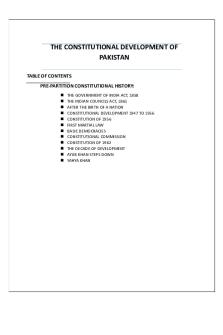
Constitutional History of pakistan
- 16 Pages
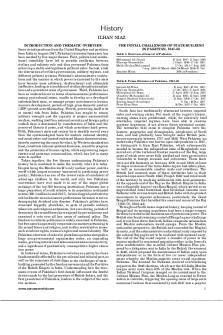
History Of Pakistan 1947-2017
- 15 Pages

History (Of Pakistan, 1947-2019)
- 16 Pages
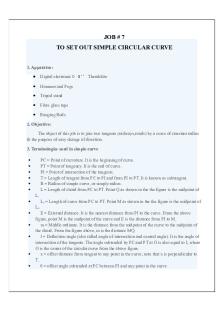
JOB - pakistan history flowchart
- 5 Pages

Pakistan History by M.R Kazmi
- 69 Pages
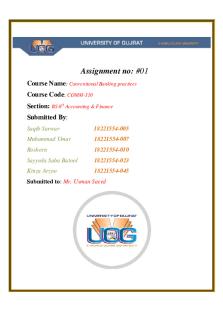
25 Banks of PAKISTAN
- 25 Pages
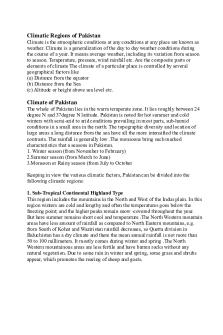
Climatic Regions of Pakistan
- 2 Pages
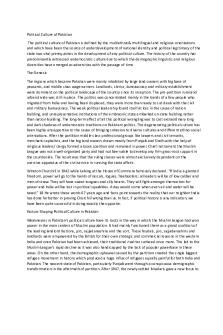
Political culture of Pakistan
- 11 Pages
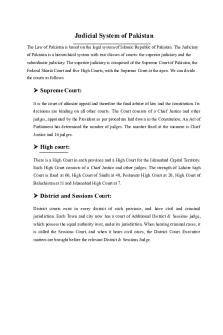
Judicial System of Pakistan
- 2 Pages
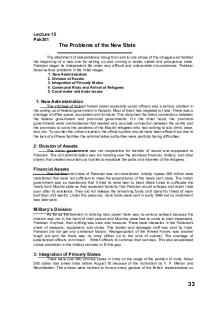
01 Early Problems of Pakistan
- 2 Pages
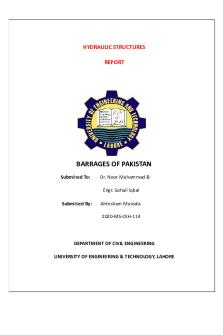
Barrages of Pakistan detail study
- 17 Pages
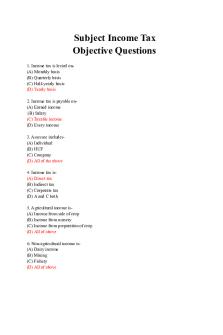
MCQs of Income Tax Pakistan
- 10 Pages

Wildlife of Pakistan Mar 2012
- 62 Pages
Popular Institutions
- Tinajero National High School - Annex
- Politeknik Caltex Riau
- Yokohama City University
- SGT University
- University of Al-Qadisiyah
- Divine Word College of Vigan
- Techniek College Rotterdam
- Universidade de Santiago
- Universiti Teknologi MARA Cawangan Johor Kampus Pasir Gudang
- Poltekkes Kemenkes Yogyakarta
- Baguio City National High School
- Colegio san marcos
- preparatoria uno
- Centro de Bachillerato Tecnológico Industrial y de Servicios No. 107
- Dalian Maritime University
- Quang Trung Secondary School
- Colegio Tecnológico en Informática
- Corporación Regional de Educación Superior
- Grupo CEDVA
- Dar Al Uloom University
- Centro de Estudios Preuniversitarios de la Universidad Nacional de Ingeniería
- 上智大学
- Aakash International School, Nuna Majara
- San Felipe Neri Catholic School
- Kang Chiao International School - New Taipei City
- Misamis Occidental National High School
- Institución Educativa Escuela Normal Juan Ladrilleros
- Kolehiyo ng Pantukan
- Batanes State College
- Instituto Continental
- Sekolah Menengah Kejuruan Kesehatan Kaltara (Tarakan)
- Colegio de La Inmaculada Concepcion - Cebu

